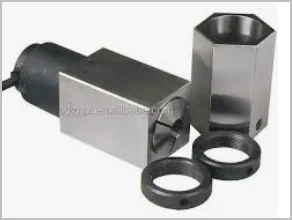Check ebay for Counterbore cutters or new, like https://www.aircraft-tool.com/detail?id=4000-1034
Also search for spotfacer cutters. https://viewer.ipaper.io/sna-europe/snap-on-industrial/ati-catalog/ati-tools-catalog/?page=62
They make a clean, flat bottomed recess, and use a pilot hole for alignment.
If you saw a picture of the mandrel that the aircraft spotfacer type use, you could make one in a couple minutes.
Used in a drill press, they work really well for making an accurately sized well finished socket, where you want one.
Also search for spotfacer cutters. https://viewer.ipaper.io/sna-europe/snap-on-industrial/ati-catalog/ati-tools-catalog/?page=62
They make a clean, flat bottomed recess, and use a pilot hole for alignment.
If you saw a picture of the mandrel that the aircraft spotfacer type use, you could make one in a couple minutes.
Used in a drill press, they work really well for making an accurately sized well finished socket, where you want one.











